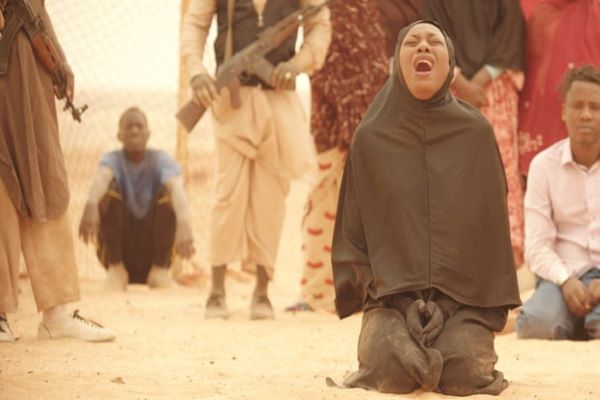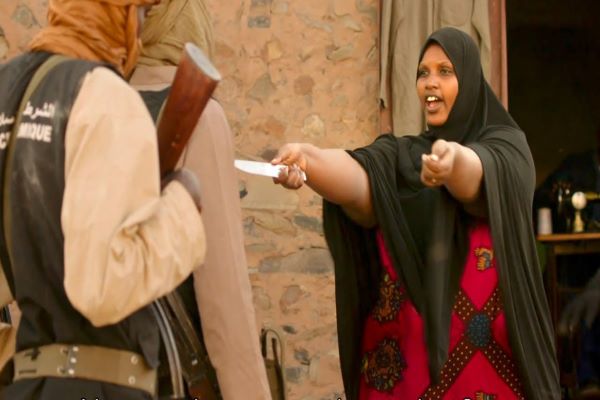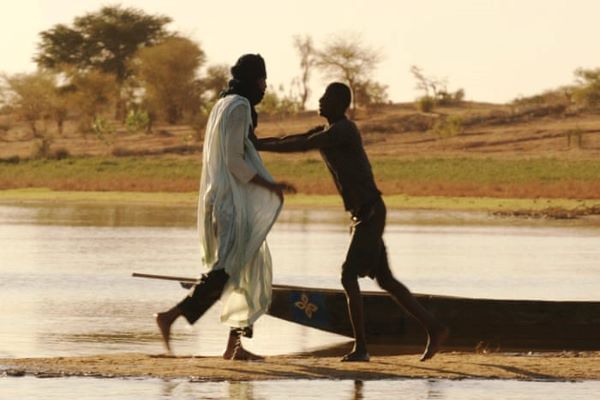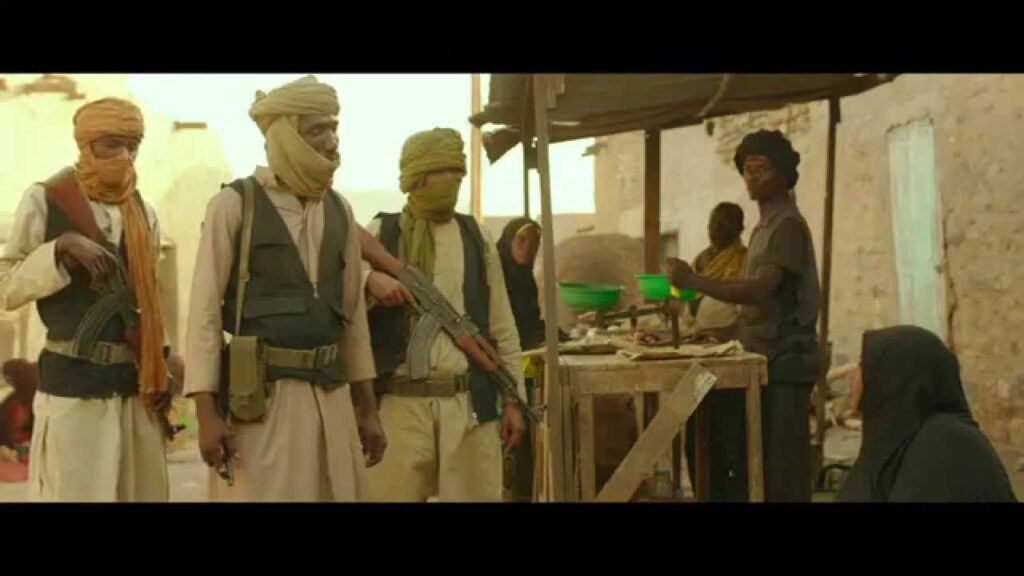Abderrahmane Sissako’s Timbuktu deals with one of the most troubling issues of the modern world – terrorism. The film shows the terrorist activities in 2012 when the terrorist group Ansar Dine captured the Malian city of Timbuktu. Historically and culturally enriched Timbuktu turned into a city of destruction and evil during this time. Sissako shows not only terrorism but also the hypocrisies of the terrorists through this film. Timbuktu depicts the boundless miseries and agonies of ordinary citizens due to terrorism.

Timbuktu shows the tortures of the jihadi terrorist group Ansar Dine which captured northern Mali including the city of Timbuktu in early 2012. The terrorists aim for establishing strict Sharia law in Timbuktu. They shoot at and destroy historical statues. The terrorists ban playing football, music, and other recreations and announce on a loudspeaker. Women are ordered to wear gloves and burqas. Basic human rights are violated across the city. An unmarried couple is stoned to death on the charge of adultery. A lady fishseller is forced to wear gloves, which she strongly counters. Another lady (Fatoumata Diawara) is sentenced to forty lashes for singing. There is an emotional and impactful scene in the film where a group of boys plays football with an imaginary football as the jihadis have already banned playing football. The jihadis do not respect the holy mosque and enter it with weapons much against the will of the imam. Impenetrable darkness descends on the entire city of Timbuktu.

Timbuktu also depicts the story of herdsman Kidane (Ibrahim Ahmed) and his family. Kidane, his wife Satima (Toulou Kiki), and his daughter Toya (Layla Walet Mohamed) live in a hut in the middle of the desert away from the city of Timbuktu. They live happily and have eight cows. An orphan Issan also lives with them and grazes the cows. One day, one of the cows, GPS, tries to cross the fishing net of the local fisherman Amadou. He gets angry and kills GPS throwing a sharp stick. Issan returns home crying. Kidane takes his gun in his pocket and confronts Amadou. A bullet gets fired accidentally from his gun during the fight. Amadou is killed and Kidane flees the scene crossing the river. Ultimately, the jihadis arrest him and his trial begins. He is sentenced to death for murdering Amadou. If Amadou’s family forgives him, he will be released in exchange for forty cows. Toya and Issan are able to get forty cows. Kidane is taken to the execution ground where Satima arrives riding on a bike. Kidane runs to Satima and both are gunned down. The jihadis chase the motorist across the desert. Toya and Issan are seen running across the desert.

Abderrahmane Sissako expresses the hypocrisies of the terrorists through this film. One terrorist Abdelkerim (Abel Jafri) looks at Fatima lustfully but orders her to cover up her head. He smokes cigarettes in hiding but bans those for ordinary citizens. The jihadis ban playing football but discuss it amongst themselves. They stone an unmarried couple to death for adultery but marries one of the Jihadis with a local girl forcefully. Sissako shows the actual color of terrorism and how detrimental it can be to society through this film. Respect and love cannot be earned through force. When basic necessities of life are denied, society turns into a crematorium or a burial ground. Sissako shows the devastating impact of terrorism not only on Timbuktu but the entire world. Terrorism has set its evil paws on the USA, UK, India, France, and many other countries. Timbuktu clearly pinpoints the human agonies caused due to terrorism.

Sissako was deeply pained and influenced when a Malian couple was stoned to death in Aguelhok by the Ansar Dine terrorist group on the charge of adultery in early 2012. This heinous incident is the inspiration behind making this film. He wanted to shoot the film in Mali but changed the plan because of a terrorist attack in Mali just before the shooting. Timbuktu was finally shot in Mauritania with the help of its government. This film is a work of fiction inspired by real-life events. Abderrahmane Sissako’s direction and screenplay deserve praise. He brilliantly captured the beauty of the deserted land, the lives and culture of Timbuktu and its people, and how those went through turmoil because of terrorism.
Timbuktu is an illustrative film that includes people from diverse cultures and as many as six languages. A humongous effort is brilliantly implemented by Sissako and his team. Sofian El Fani’s cinematography is mesmerizing. One of the most beautiful scenes in the film is when Kidane accidentally kills Amadou and crosses the river. El Fani’s camera brilliantly captured the beauty of the desert. Another important aspect of the film is Amine Bouhafa’s music. He mixed both African tribal and Western musical tones for composing the music of Timbuktu. The film won two awards at the 2014 Cannes Film Festival. It was nominated for Best Foreign Language film at the 87th Academy Awards and Best Film Not in the English Language at the 69th BAFTA awards.
